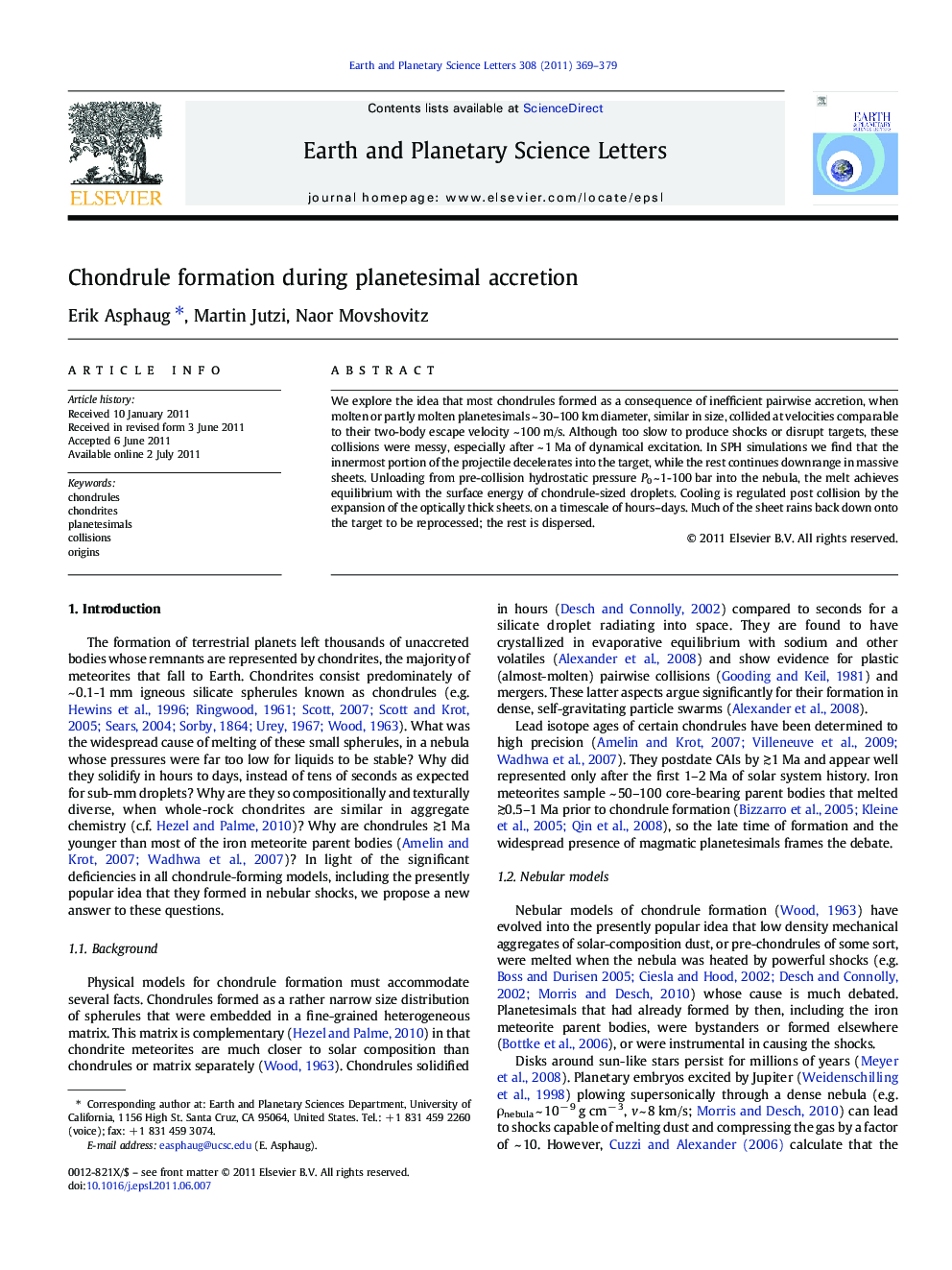| کد مقاله | کد نشریه | سال انتشار | مقاله انگلیسی | نسخه تمام متن |
|---|---|---|---|---|
| 4677862 | 1634823 | 2011 | 11 صفحه PDF | دانلود رایگان |

We explore the idea that most chondrules formed as a consequence of inefficient pairwise accretion, when molten or partly molten planetesimals ~ 30–100 km diameter, similar in size, collided at velocities comparable to their two-body escape velocity ~ 100 m/s. Although too slow to produce shocks or disrupt targets, these collisions were messy, especially after ~ 1 Ma of dynamical excitation. In SPH simulations we find that the innermost portion of the projectile decelerates into the target, while the rest continues downrange in massive sheets. Unloading from pre-collision hydrostatic pressure P0 ~ 1-100 bar into the nebula, the melt achieves equilibrium with the surface energy of chondrule-sized droplets. Cooling is regulated post collision by the expansion of the optically thick sheets. on a timescale of hours–days. Much of the sheet rains back down onto the target to be reprocessed; the rest is dispersed.
Research highlights
► We propose that chondrules formed by the sloppy accretion of melted planetesimals.
► We study high resolution SPH simulations of escape-velocity (~ 100 m/s) collisions.
► Unaccreted sheets of magma unload from hydrostatic pressure, forming droplets.
► Chondrules cool on the timescale of the expansion: hours to days.
► Shocks are not involved in the collisions.
Journal: Earth and Planetary Science Letters - Volume 308, Issues 3–4, 15 August 2011, Pages 369–379